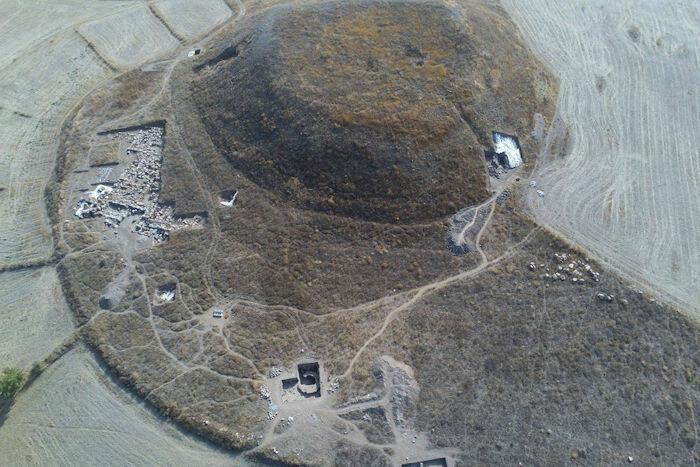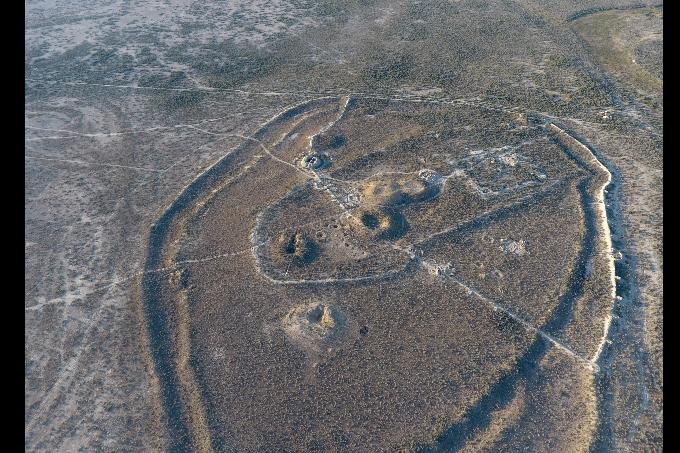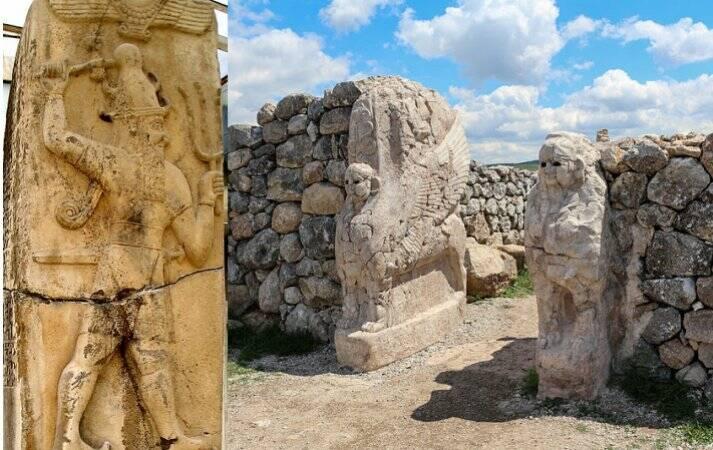Archaeologists excavating in Turkey have unearthed a mysterious, ancient circular structure that could be part of something much bigger. Scientists are now considering the possibility the enigmatic ancient structure, along with other findings made during previous excavation campaigns, could help confirm that the site is truly the ancient holy city of Zippalanda of the Hittites.
Led by the University of Pisa, an international team of archaeologists made the discovery at the site of Uşaklı Höyük located in central-northern Turkey.

Aerial view of Uşaklı Höyük excavations. At the bottom center, the circular structure found during the 2022 excavation campaign is visible. Credit: Photo Emanuele Taccola
“The interpretation of this circular structure is very difficult at the moment, and an extension of the works will be necessary, allowing us to get an idea of what is around it,” explains Professor Anacleto D’Agostino of the University of Pisa who is in charge of the excavation.
“Its location north of what is probably the city’s main temple, not far from the river that flows near the base of the battlements, leads us to favor an interpretation that this find was once a place where rituals were performed. The fact that similar ones are not documented in other contemporary sites is important.

Left: Neo-Hittite storm god “Tarhunzas” in the Aleppo museum. Credit: Verity Cridland, Wikipedia, CC BY 2.0 – Right: Sphinx Gate, Hattusa, Turkey. Credit: Bernard Gagnon, Wikipedia, CC BY-SA 3.0
If these assumptions are correct, then this structure, together with the other finds discovered over the years, would help to strengthen the identification of Uşaklı with the important Hittite city of Zippalanda, the center of worship of a powerful God of the Storm, the site of a sanctuary and a royal residence mentioned in several festivals in which the king took part,” Professor D’Agostino explains.
“The Hittites were once one of the most powerful ancient civilizations that occupied the ancient region of Anatolia.

This long-gone culture has greatly interested archaeologists and historians, but unraveling the truth about the Hittites has been difficult. Most ancient documents describing this culture that was once a rivaling threat to the ancient Egyptian kingdom were lost in the sand.” 1
Knowledge about this mysterious ancient Anatolian civilization was brought to light when “in 1906 when German archaeologist Hugo Winckler discovered a royal archive with over 10,000 clay tablets inscribed in cuneiform by people using an unknown language. These ancient tablets were the same as those found at Tell el-Amarna in Egypt and on the inscriptions on the monuments found in Turkey.

These ancient ruins could be part of the lost city of Zippalanda. Credit: University of Pisa
Czech linguist Derdich Hrozny decoded the script in 1915 and published the results of his study in his book The Language of the Hittites; Its Structure and Its Membership in the Indo-European Linguistic Family. In his book, Hrozny explained that the mysterious language of the Hittites is not Middle Eastern but rather an “Indo-European language.”
Archaeologists have excavated in Turkey for years, searching for traces of this long-gone civilization. Ancient ruins and temples that once belonged to the Hittites have been found.
The puzzling ancient circular structure was found by the international archaeological mission directed by the University of Pisa, along with remains of a large terraced wall surrounding the citadel from the Iron Age and some tombs from late antiquity. These archeological discoveries will provide scientists with more comprehensive knowledge of the once-powerful Hittite civilization.

Archaeologists must examine the ancient objects found at the site of Uşaklı Höyük. Credit: University of Pisa
“In fifteen years of investigations and excavations, the work of archaeologists has allowed the remains of monumental buildings and fragments of tablets with cuneiform inscriptions to re-emerge, contributing to the reconstruction of a period of primary importance for the Near East and the eastern Mediterranean basin, when the Hittites, a population that spoke a language belonging to the Indo-European language family, made their appearance among the protagonists of great history, constituting the powerful kingdom of Hatti.





